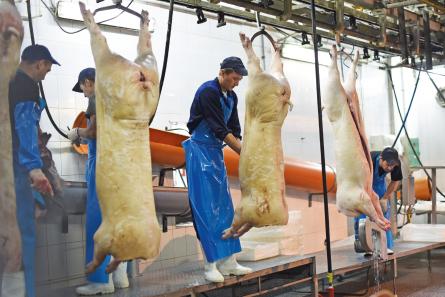Producers urged to sign up to new Pig Health Scheme
10th Dec 2018 / By Alistair Driver
Pig producers are being invited to join the new Pig Health Scheme, the successor to the British Pig Health Scheme (BPHS).
 The scheme will give producers access to post-mortem data on their pigs to help monitor the health of their herd and potentially save money, AHDB said.
The scheme will give producers access to post-mortem data on their pigs to help monitor the health of their herd and potentially save money, AHDB said.
The BPHS was suspended a year ago due to inconsistencies in the data. Following a review of the scheme and a new tender process, AHDB revealed last week that the contract for training and quality assurance has been awarded to Vetscore Limited. The physical assessments of pig carcases in abattoirs will be undertaken by Eville and Jones Commercial Services Limited.
Outlining the benefits of the updated scheme, AHDB said it provides information to producers on the diseases they may not be aware of, or just live with, such as a low-level cough, on their units. By looking closely at the condition of the pigs it will improve health and welfare and help to reduce unexplained falls in performance.
Through the scheme pigs are assessed at slaughter, by trained veterinary assessors, for 12 different conditions in the lungs, heart, liver, tail and skin, including Enzootic Pneumonia and Pleuritis. Producers will receive a report on the health of pigs from their unit to discuss with their vet. This allows them to take steps to get ahead of any disease before it becomes a greater problem.
Lauren Turner, Pork Processing Projects Manager said: “Where there are no visible signs that confirm the presence of some diseases, or where visible signs are considered the ‘norm’ on your farm, it can be hard to determine disease prevalence.
"The Pig Health Scheme will allow you to get information on diseases that you may not be aware of, and may help to reduce those unexplained falls in performance that seem to have no cause, but gradually lose you money over time by reducing growth rates for example.
“The only additional thing you will need to do is to review the information during routine meetings with your vet and act if required. Regular, active health planning with your vet is the most cost-effective way to reduce disease and improve welfare.”
Producers taking part will receive three reports – one with health information 48 hours after the abattoir monitoring; a quarterly unit comparison report so producers can compare themselves to other units; and a time comparison report using historical data from the last three years, once it’s available.
The scheme can be also used as a resource to monitor the effects of any changes relating to feed or vaccination programmes. You can look at the post-mortem information alongside antibiotic use patterns recorded on eMB, as well as physical performance data.
- There’s no cost to join and producers can sign up through their Pig Hub account at: www.pighub.org.uk more information on the scheme can be found at pork.ahdb.org.uk/health-welfare/health/safe-traceable-pork/pig-health-scheme/